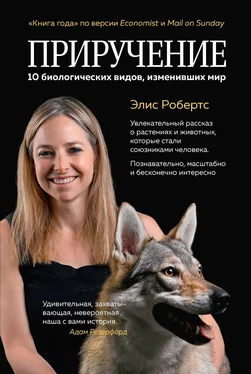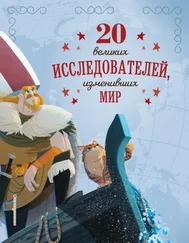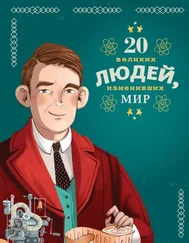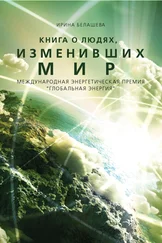И еще спасибо Дэйву. Я знаю, ты твердо убежден, что все это было твоей задумкой, но это не так. Ну ладно, может быть – только совсем чуть-чуть.
Собаки
Arendt, M. et al. (2016), ‘Diet adaptation in dog reflects spread of prehistoric agriculture’, Heredity, 117: 301–306.
Botigue, L. R. et al. (2016), ‘Ancient European dog genomes reveal continuity since the early Neolithic’, BioRxiv, doi.org/10.1101/068189.
Drake, A. G. et al. (2015), ‘3D morphometric analysis of fossil canid skulls contradicts the suggested domestication of dogs during the late Paleolithic’, Scientific Reports, 5: 8299.
Druzhkova, A. S. et al. (2013), ‘Ancient DNA analysis affirms the canid from Altai as a primitive dog’, PLOS ONE, 8: e57754.
Fan, Z. et al. (2016), ‘Worldwide patterns of genomic variation and admixture in gray wolves’, Genome Research, 26: 1-11.
Frantz, L. A. F. et al. (2016), ‘Genomic and archaeological evidence suggests a dual origin of domestic dogs’, Science, 352: 1228–1231.
Freedman, A. H. et al. (2014), ‘Genome sequencing highlights the dynamic early history of dogs’, PLOS Genetics, 10: e1004016.
Freedman, A. H. et al. (2016), ‘Demographically-based evaluation of genomic regions under selection in domestic dogs’, PLOS Genetics, 12: e1005851.
Geist, V. (2008), ‘When do wolves become dangerous to humans?’ www.wisconsinwolffacts.com/forms/geist_2008.pdf
Germonpre, M. et al. (2009), ‘Fossil dogs and wolves from Palaeolithic sites in Belgium, the Ukraine and Russia: osteometry, ancient DNA and stable isotopes’, Journal of Archaeological Science, 36: 473–490.
Hindrikson, M. et al. (2012), ‘Bucking the trend in wolf-dog hybridisation: first evidence from Europe of hybridisation between female dogs and male wolves’, PLOS ONE, 7: e46465.
Janssens, L. et al. (2016), ‘The morphology of the mandibular coronoid process does not indicate that Canis lupus chanco is the progenitor to dogs’, Zoomorphology, 135: 269–277.
Lindblad-Toh, K. et al. (2005), ‘Genome sequence, comparative analysis and haplotype structure of the domestic dog’, Nature, 438: 803–819.
Miklosi, A. & Topal, J. (2013), ‘What does it take to become “best friends”? Evolutionary changes in canine social competence’, Trends in Cognitive Sciences, 17: 287–294.
Morey, D. F. & Jeger, R. (2015), ‘Palaeolithic dogs: why sustained domestication then?’, Journal of Archaeological Science, 3: 420–428.
Ovodov, N. D. (2011), ‘A 33,000-year-old incipient dog from the Altai Mountains of Siberia: evidence of the earliest domestication disrupted by the last glacial maximum’. PLOS ONE6 (7): e22821.
Parker, H. G. et al. (2017), ‘Genomic analyses reveal the influence of geographic origin, migration and hybridization on modern dog breed development’, Cell Reports, 19: 697–708.
Reiter, T., Jagoda, E. & Capellini, T. D. (2016), ‘Dietary variation and evolution of gene copy number among dog breeds’, PLOS ONE, 11: e0148899.
Skoglund, P. et al. (2015), ‘Ancient wolf genome reveals an early divergence of domestic dog ancestors and admixture into high-latitude breeds’, Current Biology, 25: 1515–1519.
Thalmann, O. et al. (2013), ‘Complete mitochondrial genomes of ancient canids suggest a European origin of domestic dogs’, Science, 342: 871–874.
Trut, L. et al. (2009), ‘Animal evolution during domestication: the domesticated fox as a model’, Bioessays, 31: 349–360.
Пшеница
Allaby, R. G. (2015), ‘Barley domestication: the end of a central dogma?’, Genome Biology, 16: 176.
Brown, T. A. et al. (2008), ‘The complex origins of domesticated crops in the Fertile Crescent’, Trends in Ecology and Evolution, 24: 103–109.
Comai, L. (2005), ‘The advantages and disadvantages of being polyploid’, Nature Reviews Genetics, 6: 836–846.
Conneller, C. et al. (2013), ‘Substantial settlement in the European early Mesolithic: new research at Star Carr’, Antiquity, 86: 1004–1020.
Cunniff, J., Charles, M., Jones, G. & Osborne, C. P. (2010), ‘Was low atmospheric CO2 a limiting factor in the origin of agriculture?’, Environmental Archaeology, 15: 113–123.
Dickson, J. H. et al. (2000), ‘The omnivorous Tyrolean Iceman: colon contents (meat, cereals, pollen, moss and whipworm) and stable isotope analysis’, Phil. Trans. R. Soc. Lond. B, 355: 1843–1849.
Dietrich, O. et al. (2012), ‘The role of cult and feasting in the emergence of Neolithic communities. New evidence from Gobekli Tepe, south-eastern Turkey’, Antiquity, 86: 674–695.
Eitam, D. et al. (2015), ‘Experimental barley flour production in 12,500-year-old rock-cut mortars in south-western Asia’, PLOS ONE, 10: e0133306.
Fischer, A. (2003), ‘Exchange: artefacts, people and ideas on the move in Mesolithic Europe’, in Mesolithic on the Move, Larsson, L. et al. (eds) Oxbow Books, London.
Fuller, D. Q., Willcox, G. & Allaby, R. G. (2012), ‘Early agricultural pathways: moving outside the “core area” hypothesis in south-west Asia’, Journal of Experimental Botany, 63: 617–633.
Golan, G. et al. (2015), ‘Genetic evidence for differential selection of grain and embryo weight during wheat evolution under domestication’, Journal of Experimental Botany, 66: 5703–5711.
Killian, B. et al. (2007), ‘Molecular diversity at 18 loci in 321 wild and domesticate lines reveal no reduction of nucleotide diversity during Triticum monococcum (einkorn) domestication: implications for the origin of agriculture’, Molecular Biology and Evolution, 24: 2657–2668.
Maritime Archaeological Trust (Bouldnor Cliff): http://www.maritimearchaeologytrust.org/bouldnor
Momber, G. et al. (2011), ‘The Big Dig/Cover Story: Bouldnor Cliff’, British Archaeology, 121.
Pallen, M. (2015), ‘The story behind the paper: sedimentary DNA from a submerged site reveals wheat in the British Isles’ The Microbial Underground: https://blogs.warwick.ac.uk/microbialunderground/entry/the_story_ behind/
Zvelebil, M. (2006), ‘Mobility, contact and exchange in the Baltic Sea basin 6000–2000 BC’, Journal of Anthropological Archaeology, 25: 178–192.
Крупный рогатый скот
Ajmone-Marsan, P. et al. (2010), ‘On the origin of cattle: how aurochs became cattle and colonised the world’, Evolutionary Anthropology, 19: 148–157.
Greenfield, H. J. & Arnold, E. R. (2015), ‘“Go(a)t milk?” New perspectives on the zooarchaeological evidence for the earliest intensification of dairying in south-eastern Europe’, World Archaeology, 47: 792–818.
Manning, K. et al. (2015), ‘Size reduction in early European domestic cattle relates to intensification of Neolithic herding strategies’, PLOS ONE, 10: e0141873.
Meadows, W. C. (ed.), Through Indian Sign Language: The Fort Sill Ledgers of Hugh Lenox Scott and Iseeo, 1889–1897, University of Oklahoma Press, Oklahoma 2015.
Prummel, W. & Niekus, M. J. L. Th (2011), ‘Late Mesolithic hunting of a small female aurochs in the valley of the River Tjonger (the Netherlands) in the light of Mesolithic aurochs hunting in NW Europe’, Journal of Archaeological Science, 38: 1456–1467.
Roberts, Gordon: http://formby-footprints.co.uk/index.html
Salque, M. et al. (2013), ‘Earliest evidence for cheese-making in the sixth millennium BC in northern Europe’, Nature, 493: 522–525.
Singer, M.-H.S. & Gilbert, M. T. P. (2016), ‘The draft genome of extinct European aurochs and its implications for de-extinction’, Open Quaternary, 2: 1–9.
Читать дальше
Конец ознакомительного отрывка
Купить книгу












